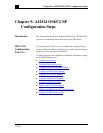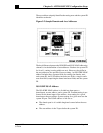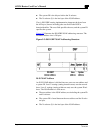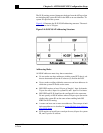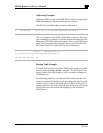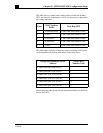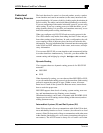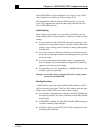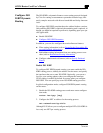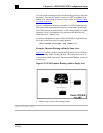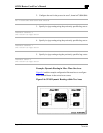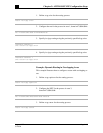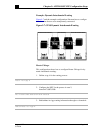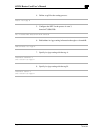
Chapter 9: AI2524 OSI/CLNP Configuration Steps
August 1997 Page 9-9
2524UM
routing ISO IGRP; it can be configured to be Level 1 only, Level2
only, or both Level 1 and Leve l2 when routing IS-IS.
ESs communicate with ISs using the ES-IS protocol. Lev el1 and
Level 2 ISs communicate with each other using either ISO IS-IS or
Cisco's ISO IGRP protocol.
Static Routing
Static routing is used when it is not possible or desirable to use dy-
namic routing. Here are some instances of when you would use static
routing:
z
If your network includes WAN links that involve paying for con-
nect time or for per-packet charges, use static routing, rather than
paying to run a routing protocol and all its routing update packets
over that link.
z
If you want routers to advertise connectivity to external networks,
but you are not running an interd o mainrouting protocol, you must
use static routes.
z
If you must interoperate with another vendor's equipment that
does not support any of the dynamic routing protocols that Cisco
supports, you must use static routing.
z
For operation over X.25, Frame Relay, or SMDS networks, static
routing is generally preferable.
Warning: An interface that is configured for static routing cannot
reroute around failed links.
Routing Decisions
A CLNP packet sent to any of the defined NSAP addresses or NETs
will be received by the router. The Cisco IOS software uses this algo-
rithm to select which NET to use when it sends a packet:
z
If no dynamic routing protocol is running, use the NET defined for
the outgoing interface, if it exists; otherwise, use the NET defined
for the router.
z
If ISO IGRP is running, use the NET of the ISO IGRP routing pro-
cess that is running on the interface.
z
If IS-IS is running, use the NET of the IS-IS routing process that
is running on the interface.



